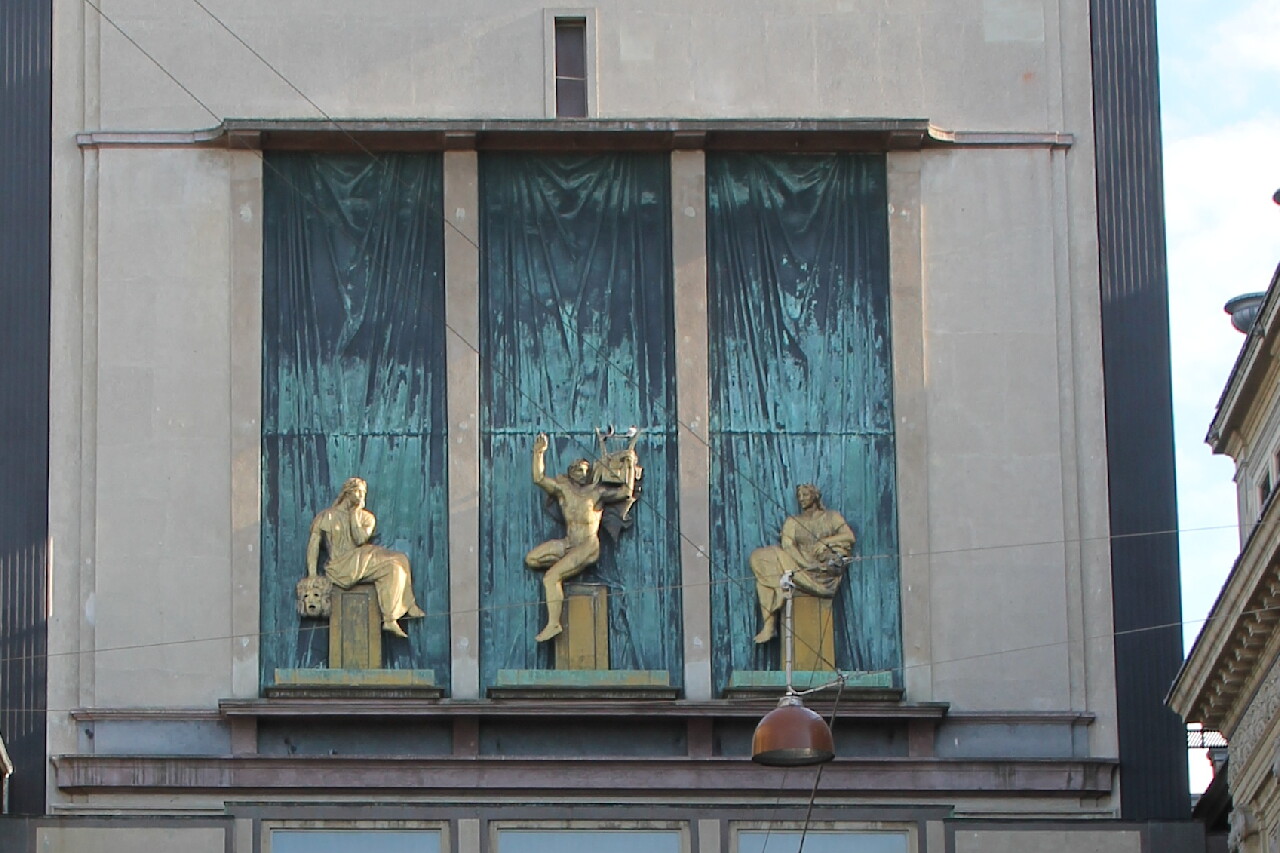Royal Danish Theatre, Copenhagen
The Nyhavn Canal ends at a dead end at Kongens Nytorv Square, which means New Royal Square. Unfortunately, during my visit, most of the square was blocked off by a fence.
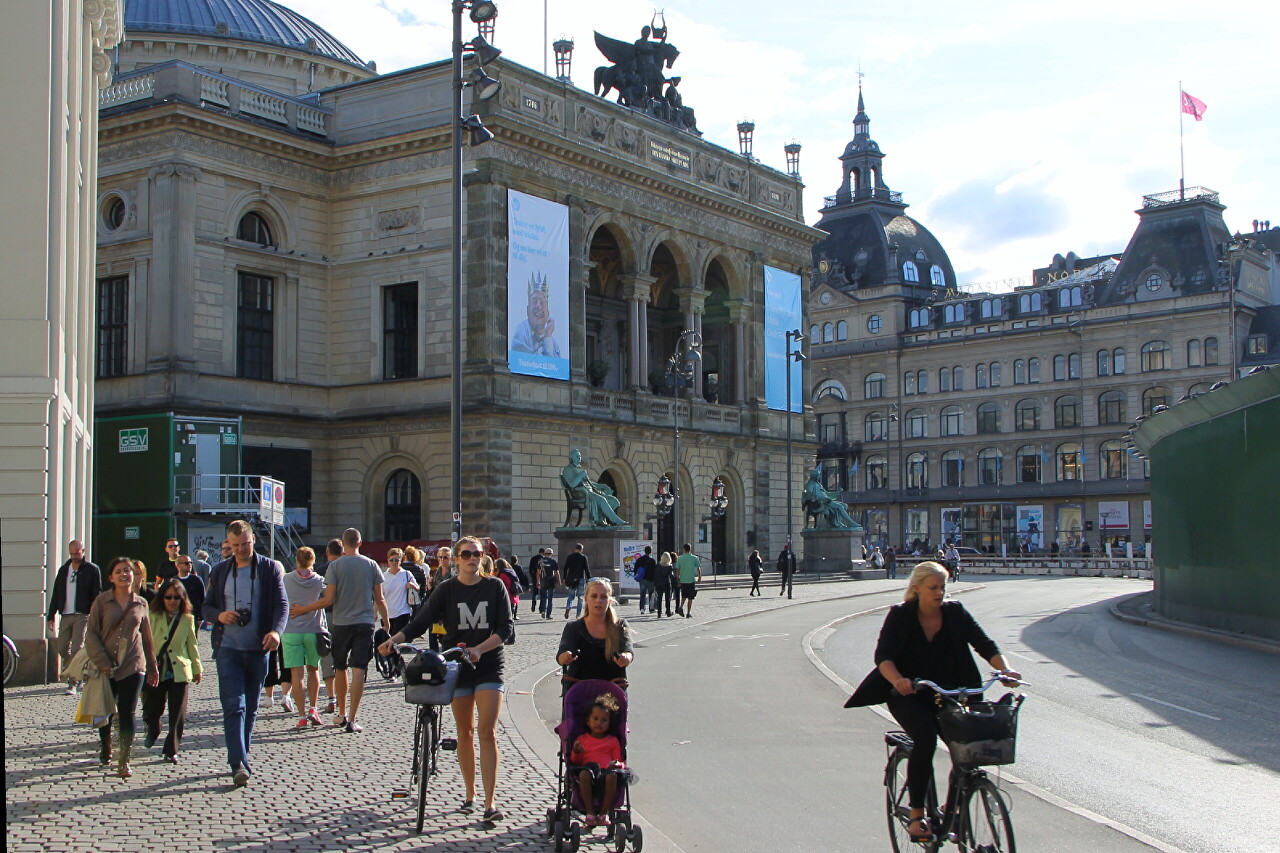
The main decoration of the square is the building of the Royal Theater (Det Kongelige Teater), which has a very interesting history. In March 1720, the French engineer and wine merchant Etienne Capion began staging performances in the so-called Goat House (Det lille Gjethus) on Kongens Nytorv Square. Since only foreign actors participated in the productions and the performances were performed in German and French, King Frederick IV of Denmark closed the theater for "unpatriotic".
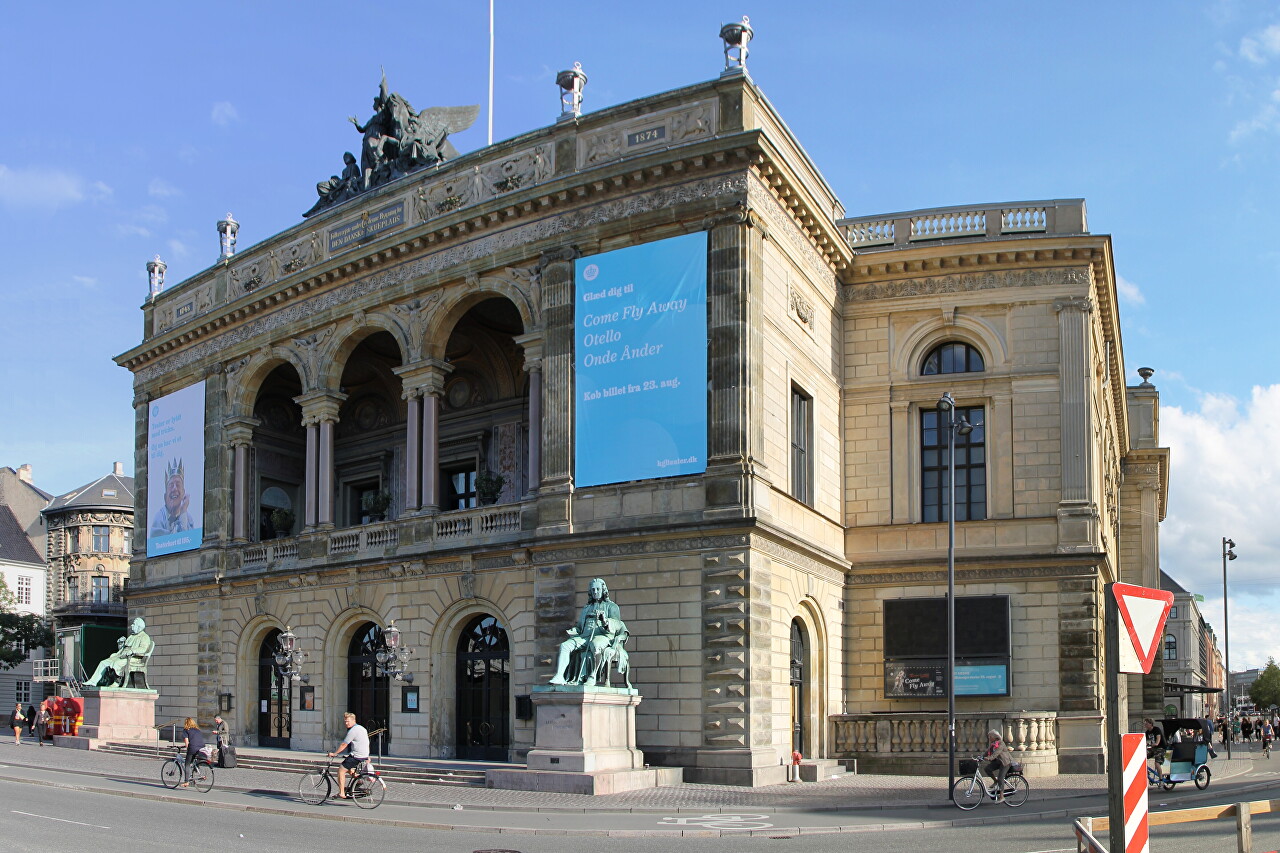
Then Capion invited the French theater director Rene Montague to create a troupe of Danes, which presented the first performance on September 23, 1722, showing Moliere's comedy The Miser, or the School of Lies translated into Danish. The theme of the theater also included Holberg's comedies, ridiculing the nobility and burghers, which again caused extreme dissatisfaction with the authorities, and in 1728 the king again ordered the theater to close and in the same year the empty building was destroyed by fire. But the public wanted entertainment, and performances were staged in the mansions and apartments of the aristocracy.
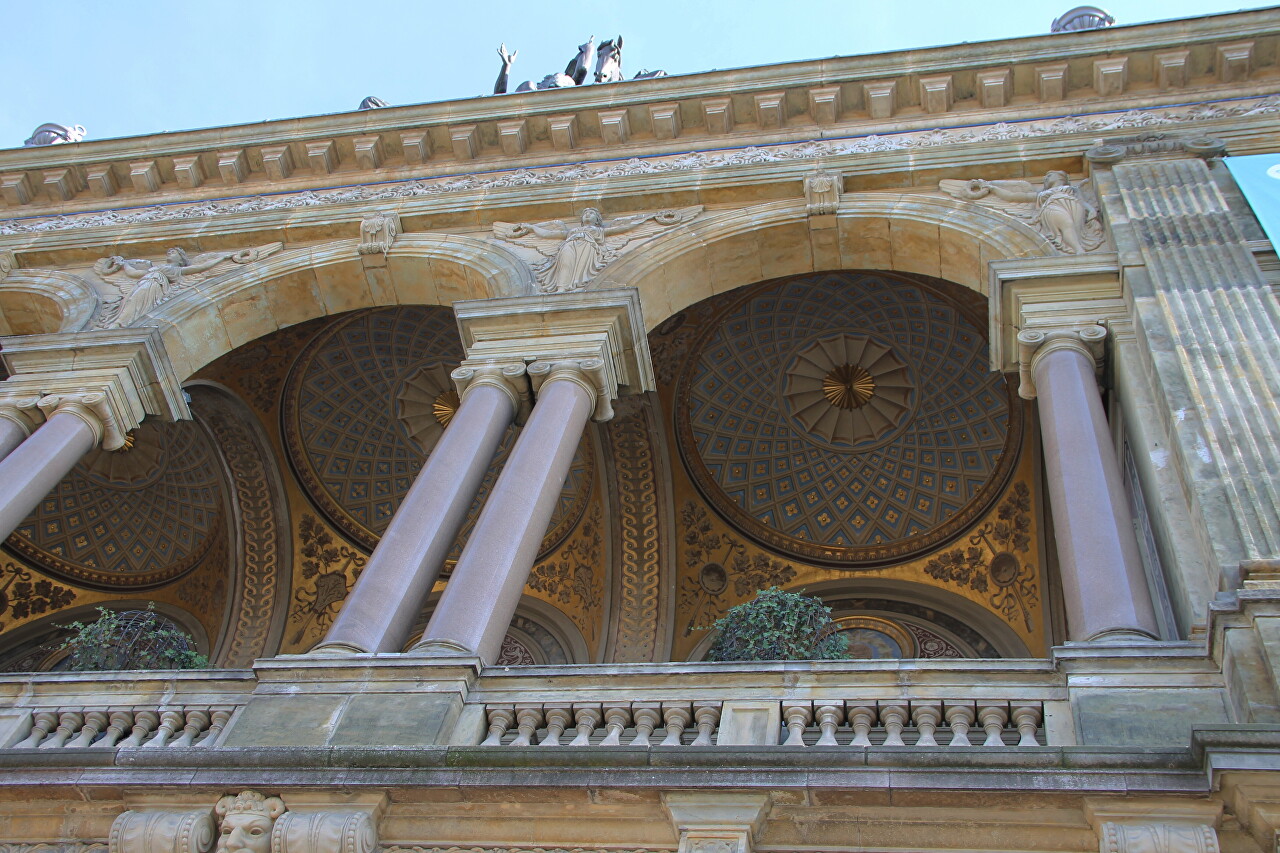
The revival of the theater began only after the ascension to the throne of the cheerful and educated Frederick V. Capion and Holberg assembled an old troupe, and on November 11, 1747, the king signed a decree allocating funds for the construction of the National Theater with a hall for 600 spectators. The building, designed by the royal urban planner Nicolai Eigtved, was built incredibly quickly: the groundbreaking took place on July 4, 1748, and the theater opened on December 18 of the same year. This date is considered the Foundation Day of the theater and can be seen in the left part of the pediment.
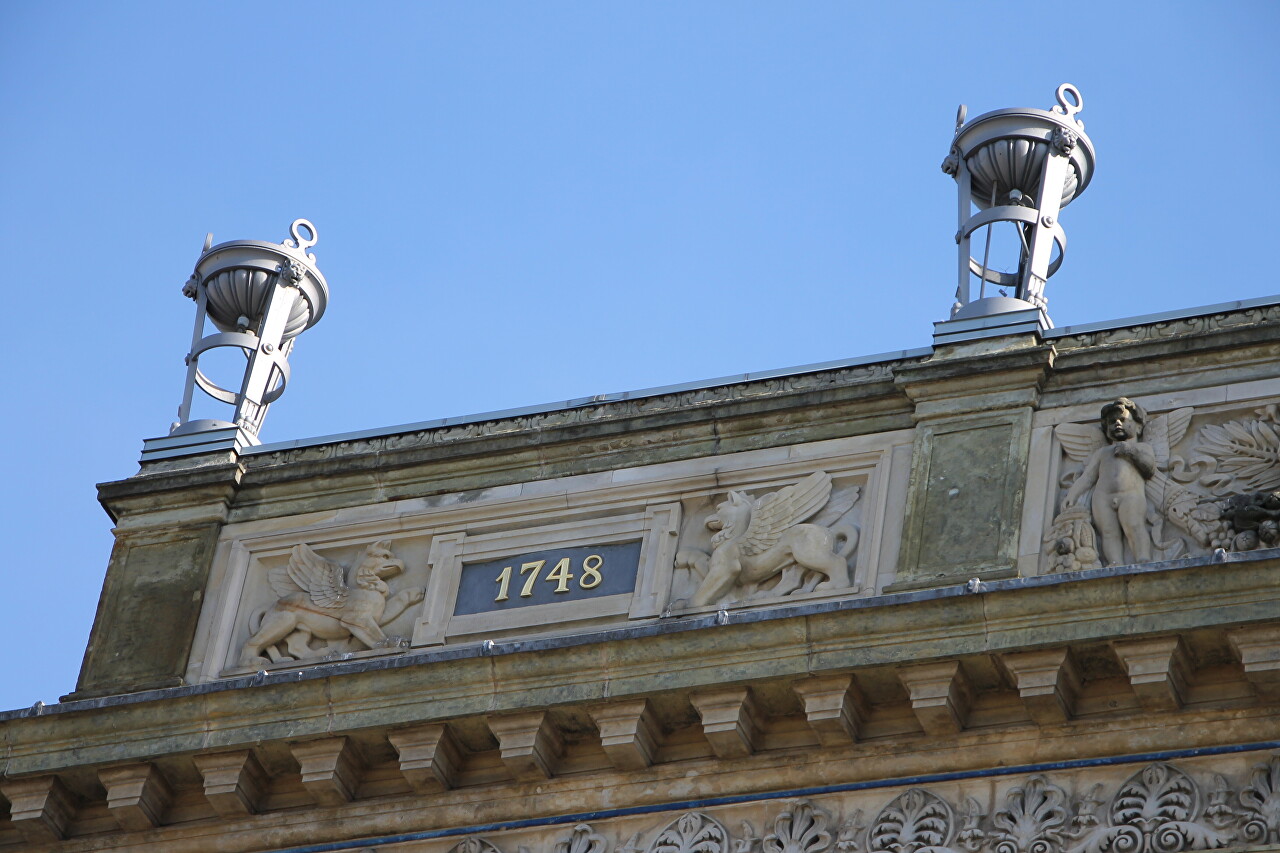
During the crisis of the late 60s of the 18th century, the municipality severely cut funding for the theater, and Christian VII, a big fan of this art form, transferred the theater to the Ministry of the Court, and the theater became known as the Royal. The haste of construction led to sad results - due to the subsidence of water-soaked soil, the building quickly fell into disrepair and in 1772 the theater had to be reconstructed, at the same time increasing the auditorium, which could no longer accommodate everyone. The renovation works were carried out under the direction of architect Caspar Frederik Harsdorff for almost 20 years. In the following years, the theater was repeatedly rebuilt - in 1837, to expand the hall, the side walls were cut out and new ones were built, in 1855 the stage was completely renovated and enlarged, in 1857 the stage was enlarged again.
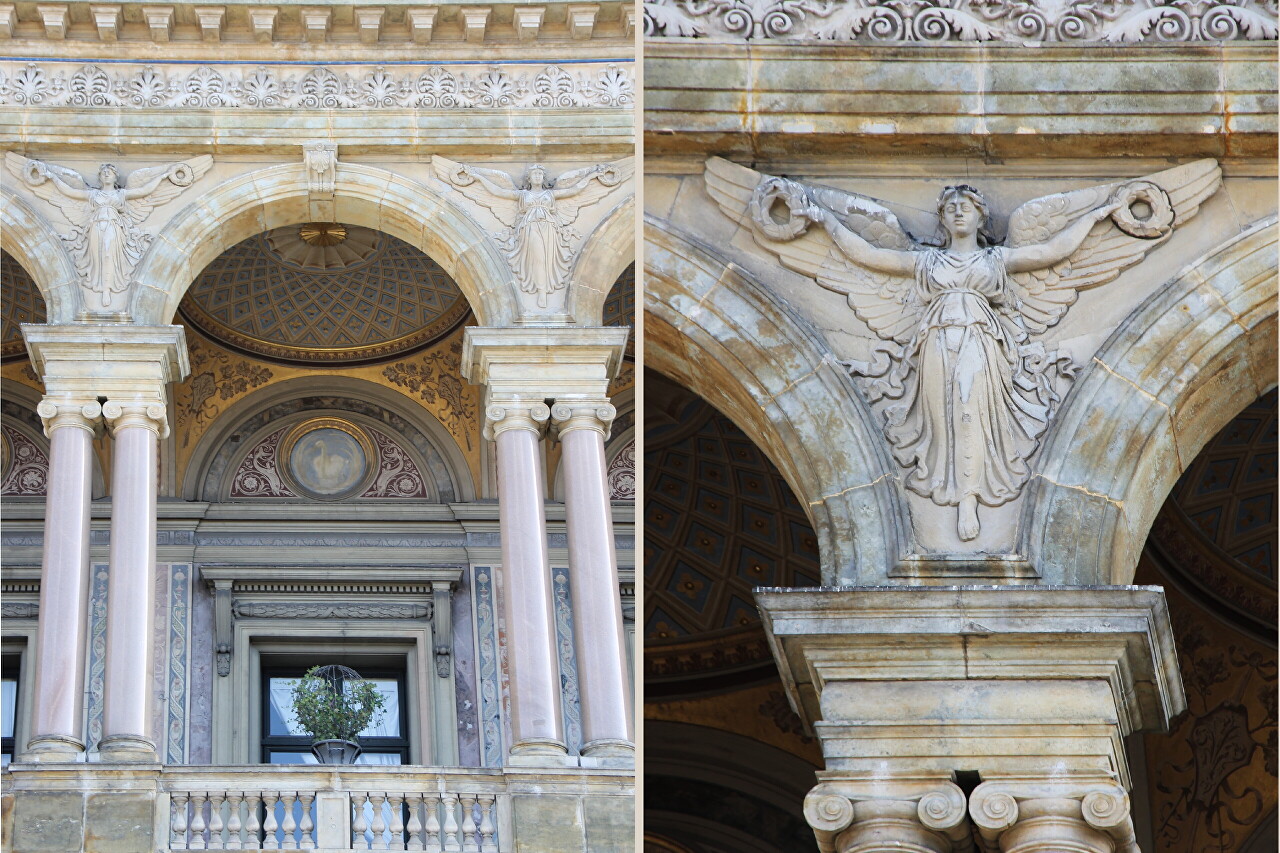
The haste of construction led to sad results: due to the subsidence of water-soaked soil, the building quickly fell into disrepair and in 1772 the theater had to be reconstructed, at the same time increasing the auditorium, which could no longer accommodate everyone. The renovation works were carried out under the direction of architect Kaspar Harsdorf for almost 20 years. In the following years, the theater was repeatedly rebuilt: in 1837, to expand the hall, the side walls were cut out and new ones were built, in 1855 the stage was completely renovated and enlarged, in 1857 the stage was enlarged again. As a result of endless "improvements", the building took on an unsightly appearance and became unsuitable for operation. There were piles of construction debris inside and around, and hordes of rats lived in the theater's premises.
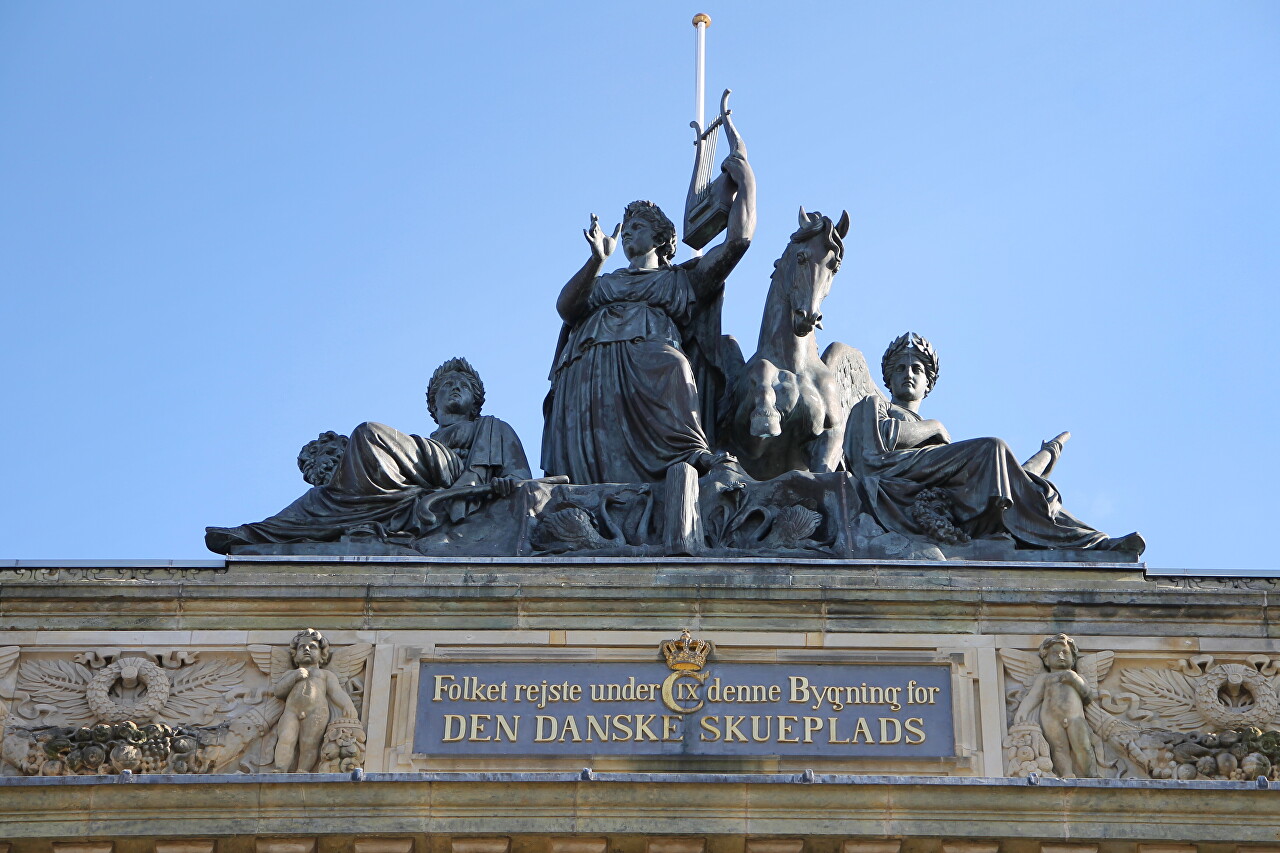
In 1857, a debate began on the construction of a new building, which lasted almost 15 years, and only in 1871 an architectural competition was announced, the winner of which was Wilhelm Dahlerup, who presented a project in the style of historicism. Construction began on October 18, 1872 and lasted 2 years. Not without scandals-several ministers were dismissed due to budget overruns, but still on October 15, 1874, the theater was officially opened. The hall can accommodate 1,600 spectators and has a special royal box. In 1883, the Carlsberg Foundation financed the decoration of the facade of the building, thanks to which the building acquired its current appearance.
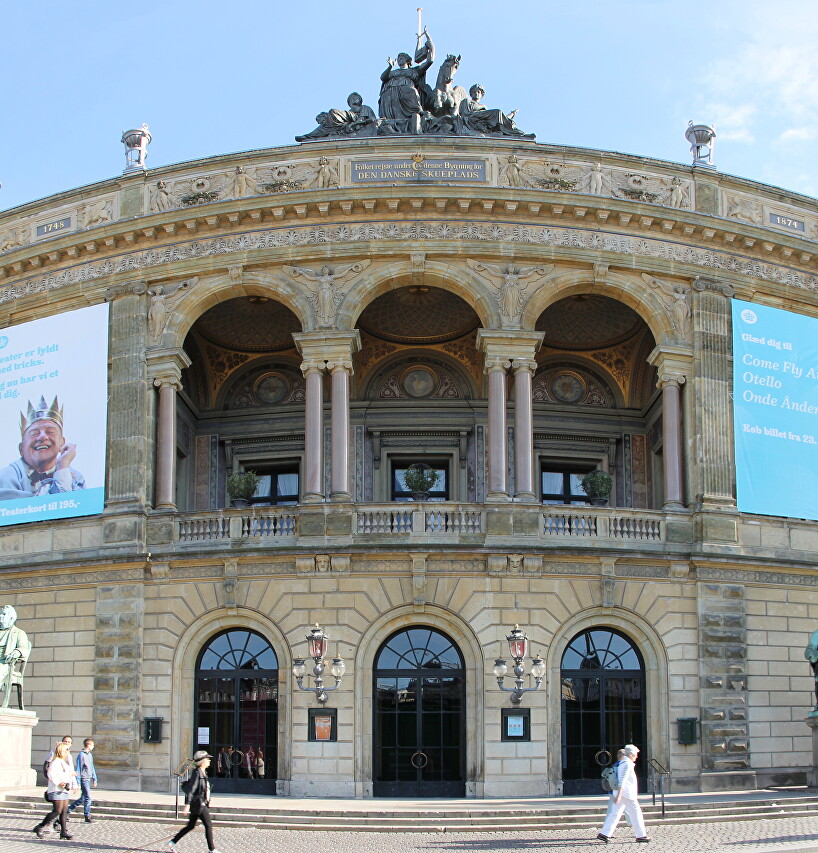
In 1932-1939, the so-called "New Stage" (Ny Scene) was added to the left facade of the theater in the Art Deco style designed by architect Holger Jacobsen. The hall had a capacity of 750 spectators and was intended for dramatic performances. The stage is built over an arch, and among the inhabitants of Copenhagen, the building was called" Starling's Nest " (Stærekassen), over time this name became official. In 2008, a new building (Skuespilhuset) was built and the Small Stage moved there. Now the hall belongs to the city administration and is rented out for cultural events and conferences.
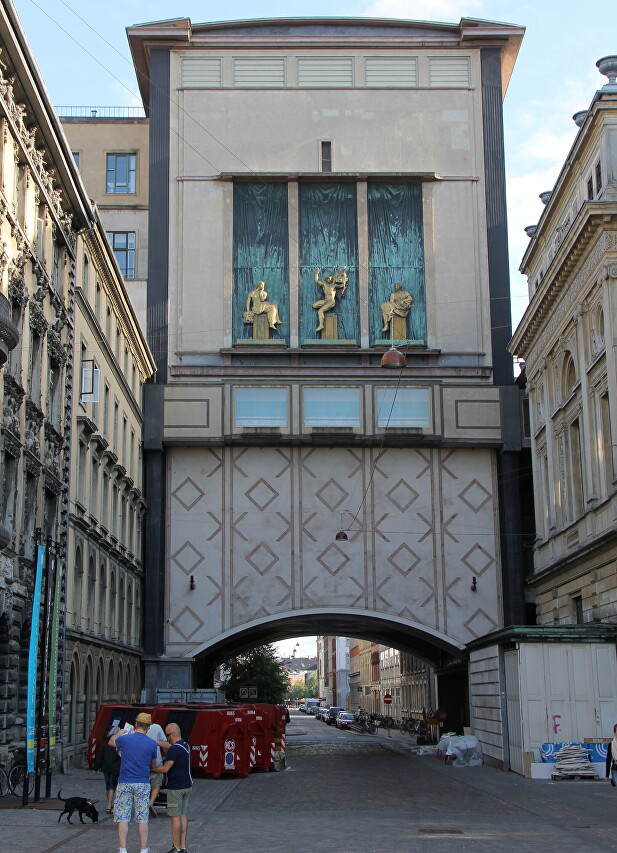
The facades are decorated with bronze bas-reliefs on the background of a copper panel depicting a theater curtain. On the facade facing Kongens Nytorv, you can see Apollo, the god of musicians, surrounded by the muse of tragedy on the right and the muse of comedy on the left. The opposite side shows Mozart with a violin, representing music, surrounded by Eros on a swan, representing dance, and Shakespeare's dramas. The author of the sculptures is Einar Utzon - Frank.
